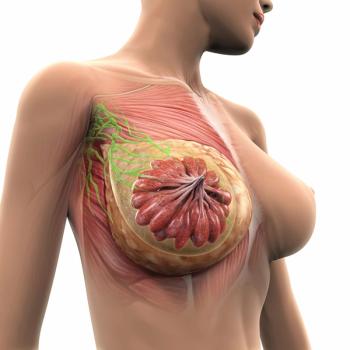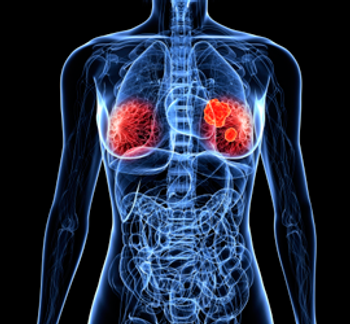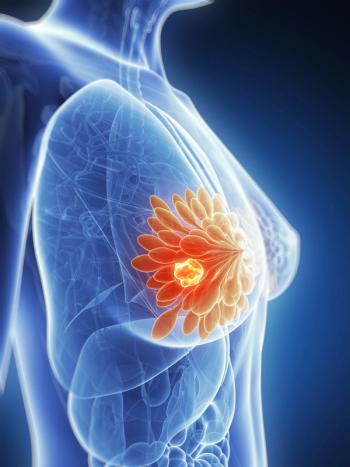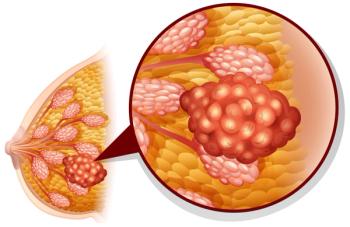
Oncology NEWS International
- Oncology NEWS International Vol 17 No 2
- Volume 17
- Issue 2
Frontline alemtuzumab promising for high-risk CLL pts
A novel frontline regimen has shown efficacy in high-risk patients with chronic lymphocytic leukemia, with no significant increase in hematologic toxicity, compared with historical data on the standard regimen
ATLANTAA novel frontline regimen has shown efficacy in high-risk patients with chronic lymphocytic leukemia, with no significant increase in hematologic toxicity, compared with historical data on the standard regimen, said William Wierda, MD, PhD, of M.D. Anderson Cancer Center. He presented preliminary results of the ongoing chemoimmunotherapy trial at ASH 2007 (abstract 628).
In a prior study of chemoimmunotherapy for previously untreated CLL, Dr. Wierda and his colleagues found that the regimen of fludarabine, cyclophosphamide, and rituximab (Rituxan) (FCR) was highly active, with a complete response (CR) rate of 70% and progression-free survival of 77 months (Tam CS et al: ASCO annual meeting 2007, abstract 7008).
Alemtuzumab (Campath), a humanized IgG1 monoclonal antibody targeting the CD52 antigen that is expressed by a variety of lymphoid neoplasms, has shown significant activity in fludarabine-refractory CLL patients.
An earlier trial of this agent in combination with FCR (CFAR regimen) in 80 heavily pretreated CLL patients produced a CR of 25% and overall response rate of 66%, with acceptable toxicity (Wierda WG et al: Blood 108:31, 2006).
The CFAR regimen was therefore evaluated in a single-arm phase II trial of chemonaive high-risk CLL patients. High-risk patients were those younger than age 70 with beta-2-microglobulin levels greater than twice normal.
Treatment consisted of cyclophosphamide 200 mg/m2 and fludarabine 20 mg/m2 on days 3-5; alemtuzumab 30 mg IV on days 1, 3, and 5; and rituximab 375 to 500 mg/m2 on day 2, given for 28 days for up to 6 planned courses.
Allopurinol was given during course 1 as prophylaxis for tumor lysis. Patients routinely received pegfilgrastim (Neulasta) on day 6. Antibiotic prophylaxis included TMP-SMZ DS, while valacyclovir (Valtrex) or valganciclovir (Valcyte) was given as HSV/CMV prophylaxis.
Currently 47 of a planned 60 patients have been enrolled. Patient characteristics were comparable to those observed in the historical FCR group.
The efficacy of CFAR was at least as great as that previously observed with FCR in the high-risk group. "In the high-risk group of patients who had received FCR, the complete response rate was 60% vs 69% for the 26 evaluable patients treated with CFAR frontline," Dr. Wierda said. Partial remission was seen in 7 patients (27%), for an overall response rate of 96% (see Table).
With a median follow-up of 13 months, three responders have relapsed and died. Overall, there was no increased incidence of early deaths with CFAR, compared with the FCR historical controls.
No significant difference was observed in the incidence of grade 3-4 hematologic toxicities between the two regimens, although pegfilgrastim was routinely given in conjunction with CFAR therapy but not with FCR. The infection rate among the two regimens was also similar. Valgancyclovir provided effective CMV prophylaxis.
Articles in this issue
almost 18 years ago
NLST article not balanced, critic of screening trial assertsalmost 18 years ago
M.D. Anderson and AstraZeneca form neuropathic pain alliancealmost 18 years ago
Good nilotinib responses in imatinib-resistant AP-CMLalmost 18 years ago
Virus linked to Merkel cell carcinomaalmost 18 years ago
Benefit of adjuvant RT/CT for pancreatic ca affirmedalmost 18 years ago
Recurrence Score helps select node+ pts for chemoalmost 18 years ago
For resectable liver mets: Preop chemotherapy or not?almost 18 years ago
Plerixafor boosts stem cell mobilization in myeloma ptsalmost 18 years ago
MRI shows second-hand smoke damagealmost 18 years ago
Assay has high sensitivity for hard-to-detect SLN metsNewsletter
Stay up to date on recent advances in the multidisciplinary approach to cancer.





















































































